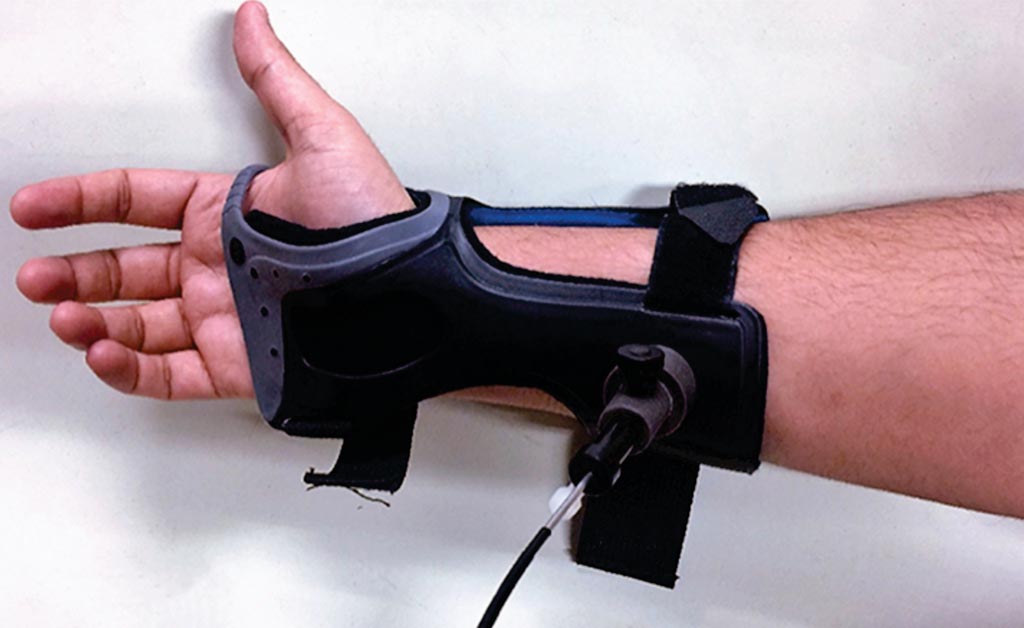Noninvasive Blood Glucose Test Evaluated for Accuracy
By LabMedica International staff writers
Posted on 23 Oct 2018
For those living with diabetes, monitoring blood glucose accurately is necessary to prevent diabetes-related complications such as heart attacks, blindness and coma. Optical monitoring of blood glucose levels for non-invasive diagnosis is growing.Posted on 23 Oct 2018
Recent efforts in this direction have been inclined towards reducing the requirement of calibration framework. Scientists have evaluated the accuracy of new technology to monitor blood glucose levels without needles or a finger prick. Early results show that the noninvasive technology measures blood glucose levels as effectively as a finger prick test without drawing blood.

Image: This device uses laser technology to detect glucose levels under the skin, an alternative to painful pricking (Photo courtesy of University of Missouri-Columbia).
A team of scientists from the Massachusetts Institute of Technology (Cambridge, MA, USA) and the University of Missouri-Columbia (Columbia, MO, USA) measured the blood glucose levels of 20 healthy, non-diabetic adults prior to drinking a glucose-rich beverage. Blood glucose levels were then measured in intervals over the next 160 minutes using three methods: spectroscopy, intra-venous blood test and finger prick. The tests are designed to determine how much glucose remains in the blood and if a patient's insulin-regulating mechanisms are working effectively. They found that spectroscopy predicted glucose values as accurately as a finger prick test.
The device uses a technique called Raman spectroscopy to measure the chemical composition of skin and extract the amount of glucose out of other skin compartments. A fiber optic cable attached to a wristband passes laser light onto the skin to detect different components in the skin, such as fat tissue, protein, collagen and glucose molecules. The shifts in wavelengths associated with glucose present in the blood create a sort of molecular fingerprint that can be used to determine glucose levels.
Jeon Woong Kang, PhD, a lead co-author of the study said, “We know that handheld skin prick tests are not always accurate and may be uncomfortable for patients. The gold standard is intravenous blood testing, but frequent blood draws may not be an option for many patients. We were pleased to find that our initial results show Raman spectroscopy can measure glucose levels that are comparable to the finger stick devices. We hope that we can refine this method to be a noninvasive continuous glucose monitoring sensor.” The study was published in the October 2018 issue of the journal Analytical and Bioanalytical Chemistry.
Related Links:
Massachusetts Institute of Technology
University of Missouri-Columbia













